Jean M. Roberts's Blog, page 13
January 30, 2024
Author Interview with Myra McIlvain

Welcome Readers toanother installment of our author interview series. Today we have the pleasureof chatting with Myra, author of multiple historical fiction books set in Texas.
JMR-Welcome to theBooks Delight, Myra. Tell our readers where you live, what you do for fun andwhat does the perfect day look like?
Thank you, Jeanne. Ilive in Austin, Texas, with my still handsome 98-year-old husband, Stroud. Mybrisk two-mile walk each morning is the beginning of my perfect day when I feelrefreshed, and my pace allows me to forget everything and cast myself into thelives of my characters. The topper comes when my characters surprise me withnew insights.
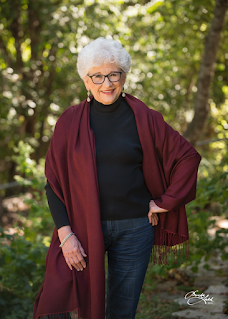
JMR-What’s yourfavorite historical time period? Why?
My favorite historicaltime period is Texas in the 19th century when Anglo settlers firstbegan arriving. I am drawn to the energy and sheer determination of those pioneerswho scratched from the raw earth entire communities.
JMR-Who is yourfavorite historical figure? Why? If you could ask them one question, what wouldit be?
Sam Houston, you werean amazing leader with a broad understanding of human nature. You served as governorof Tennessee, led Texas in its war for independence from Mexico, served aspresident of the new Republic of Texas, and served in the US Senate. In yourcampaign for governor of Texas before the Civil War, you stood up to politicalpowers and warned against secession. You even stepped down as governor ratherthan swear an oath to the Confederacy. With all those outstanding qualities,what failure caused your first bride to flee from you shortly after thewedding?
JMR- How did you cometo be a writer of historical fiction?
My path to writinghistorical fiction evolved from writing Texas historical markers, articles formagazines such as Texas Highways, and five guidebooks about famous andinfamous people and places all over the state. The stories I discovered stirredmy imagination and made me eager to explore the people behind those events.What drove them? What qualities made them fail or succeed or both? How did differingcommunities look at slavery and the Civil War? Historical fiction became mytrue love because it is the perfect vehicle for exploring and gleaning anunderstanding of different eras in Texas through the lives of my characters.
JMR- We are allaffected by the highs and lows in our lives. How has your lived life informedyour writing?
I have not framed mystories around my experiences, but my very young memories of WWII and thesuffering I heard about prompted me to write Legacy, my first historicalfiction. My concern about my ancestors’ ownership of slaves and all the thingsI learned about the German immigrants in Texas have played a role in mycuriosity and writing about the Civil War, Reconstruction, and the aftermath asportrayed in The Doctor’s Wife, Stein House, A German Family Saga, and WatersPlantation.
JMR- Did you visitanyone of the places in your book? Where did you feel closest to yourcharacters?
I love NatchitochesParish, Louisiana, and have explored the area several times and writtenarticles about its history. The architecture rising above the former docks inNatchitoches stirs my imagination of that time when it was the jumping-offplace for settlers coming into Texas. South of town, Yucca Plantation, which wasbuilt by a freed concubine who owned slaves, never fails to challenge my thinking about ourpast.
JMR- Myra, tell usabout your book.
The Knotted Ring isSusannah’s story. Pregnant with her slave lover’s baby, she accepts an arrangedmarriage to Hezekiah, a man headed to Texas for a Spanish land grant. Tangledin a series of lies about the origin of a beautiful ring woven from her redhair and the circumstances of her pregnancy, Susannah embarks on the harsh tripto Texas, grieving for her lost love and determined to control her destiny.
On the wagon train journey, Susannah admires Hezekiah’sstrengths and beliefs as they are tested in his dealings with his slaves, the NativeAmericans, and a strange Mad Stone. He becomes a successful and respectedmember of Stephen F. Austin’s original colony but fails in his determination tomake the best decisions for Susannah. She will have to decide if she can livewith the consequences of her lies and open herself to this man who shows everyform of contrition or if she allows longing for what she cannot have to destroyher life.
JMR-What projects doyou have in the pipeline?
I am working on a sequelto The Knotted Ring. I love the characters and want to see how they survive TheRunaway Scrape, during Texas’ War for Independence from Mexico. I know thatSusannah will have challenges stemming from the lies she created in her youth,and she will have to navigate the family’s and their slaves’ trek across Texasas they fear the Mexican Army is not far behind.
JMR- Tell our readershow to find you on social media and the web.
website: www.myramcilvain.com
Linkedin.com/myra-mcilvain-mm020238
JMR- What question wereyou hoping I’d ask but didn’t?
I hoped you might askwhat led me to write The Knotted Ring.
JMR- Thank you, Myra,for stopping by. Your books look really great! Readers, I’ve included a link toMyra’s book below. Please be sure to check it out.

January 29, 2024
Interview with author Catherine Astl

Welcome Readers toanother installment of our author interview series. Today we have the pleasureof chatting with Catherine, author of multiple historical fiction books.
JMR-Welcome to theBooks Delight, Catherine. Tell our readers where you live, what you do for funand what does the perfect day look like?
CA- Thank you for having me! I appreciate this great opportunity toconnect with readers.
Ilive in Wesley Chapel, Florida, which is a bit north of Tampa. I love to read,write, travel, and spend time with my family. On that note, my perfect daywould include all these things!
I would love to wake up early and write for a couple of hours.Then, to really start the perfect day, I would definitely be in the SmokyMountains with my family! Packing a picnic, the family would gather, and we’ddrive to Cades Cove in the Great Smoky Mountains National Park, keeping mycamera handy for wildlife sightings. If we’re lucky, we will see turkey, deer,bear, and maybe even a coyote. In addition, the views are just spectacular, andI never get tired of seeing the sun move across the soft peaks.
Laterin the day, I’d love a nice dinner (anything Italian!) in a cozy cabin, andfinally, playing games or reading a book on the deck or by the fireplace,depending on the weather.

JMR-What’s yourfavorite historical time period? Why?
CA- This is tough one! I feel drawn to a few historical time periods –the Tudor era in England especially – but I always come back to the early 1800sin rural Appalachia, when mostly Scots-Irish were just beginning to settle thetowns of Gatlinburg, Cades Cove, etc.
I love imagining the moment the people set footon the land, staked their claims, and began building cabins, corn cribs, barns,churches, schools, general stores, etc. I find that fascinating: starting fromnothing and creating an entire community that was prosperous and functioning. Ialso love the self-sufficiency, freedom, and American spirit woven throughtheir lives.
This is the time period in which I write my SmokyMountain Historical Fiction novels, and I know I’ve found my happy place in mywriting. I cannot wait to write more!
JMR-Who is yourfavorite historical figure? Why? If you could ask them one question, what wouldit be?
CA- Ah, you got me with this one too! So difficult tochoose just one! While I’d love to go back and talk with Galileo, Shakespeare,Machiavelli, and Julius Caesar, my pick would be John Oliver, who founded CadesCove. Since I write about him and how he created a self-sufficient,flourishing, and tight-knit community from nothing, I would ask him what hethought about his legacy, about the national park, and about living in one ofthe most beautiful places on earth. I know their lives were a lot of toil andhard work, but there was also a magic in the air that I truly believe theyrecognized. I just know, in my heart, that John Oliver, the Walker Sisters, andmost residents of the peaks and valleys, felt the soul of the Smoky Mountains.
JMR- How did you cometo be a writer of historical fiction?
CA-My father’s side of our family is from NorthCarolina, and we’ve been visiting the Smoky mountains for my entire life. I’vealways felt the magic of these mountains, walking through the preserved cabinsand fields of Cades Cove and other such places in the national park. As Istepped into a cabin, gazed at the long dormant hearth, I wondered how thepeople really lived, how they raised children, created an entire community,lived off the land, handled sickness, despair, and celebrations. And I wantedto bring their stories to life.
My mission is to honor and preserve their unique history, and I always keep in mind my reason for writing: to preserve andhonor history. I truly believe we can all learn something from these brave menand women who came to Tennessee and North Carolina, staked out land, built andgrew and hunted everything they needed, and created a community full of family,resilience, and perseverance.
There’snothing like the Great Smoky Mountains and its people; I am proudthat they are part of my own personal heritage, and I proudly honor theirstories within my historical fiction novels.
JMR- We are allaffected by the highs and lows in our lives. How has your lived life informedyour writing?
CA-I’ve been through an awful lot in my life, fromlife-threatening illness in my early years, to changing careers – from law toteaching, all the while pursuing my writing dreams. My lived life has informedmy writing in that I got very focused, laser-focused, very early in life. I’vealways wanted to be a writer and learning the tough life lessons I did, at suchan early age, forced me to do away with all the “fluff” and concentrate on whatI truly wanted. It gave me a unique perspective on life due to thoseexperiences. And, I am so very, very lucky to have a wonderful supportivefamily – family is everything!
JMR- Did you visitanyone of the places in your book? Where did you feel closest to yourcharacters?
CA -Oh yes!! I’ve been to the Great Smoky MountainsNational Park countless times; I almost feel I grew up there! We still visitthe area every year, every summer, sometimes during fall, winter, and springtoo. I’ve walked through John Oliver’s cabin, and the Walker Sisters’ cabin somany times, and since my books came out, they have even more meaning to me.
It is in the remnants of their cabins, barns, andoutbuildings, walking on the same land as they walked, that I feel closest tothem. Imagine seeing the actual wallpaper (catalog pages and such) theWalker Sisters put up in their home?! Or looking at their hearth and cabinwhere they actually sat and sewed, cooked, ate, slept?! Anyone can still seethis cabin; I am so thankful to the park that they preserved these specialplaces.
JMR- Catherine, tell usabout your book, Home of the Soul; A Novel of the Walker Sisters of LittleGreenbrier Cove.
CA- I absolutely LOVED writing this book. The Walker Sisters ofLittle Greenbrier Cove became famous when they bravely stood up to thegovernment, fighting to keep their home and land as the Great Smoky MountainsNational Park was being established. When The Saturday Evening Post rana story about their lives, Margaret Jane, Mary Elizabeth, Martha Ann, NancyMelinda, Louisa Susan, Sarah Caroline, and Hettie Rebecca became instantcelebrities as they became symbols of American freedom and self-sufficiency.
They had a hard life to be sure, but a good one,surrounded by God, family, and their beloved land. Their land wasn't just atract, a farm, or a piece of territory to them - it was a lifestyle, their veryessence.
JMR-What projects doyou have in the pipeline?
CA-I have the following projects in the pipeline; all of which centeraround the lives of people and communities who once called the Great SmokyMountains National Park home.
a) Iam researching and outlining a book about Elkmont; some call it the Ghost Townof the Smokies. It was once a logging town, and then a resort destination – Daisytown -complete with The Wonderland Hotel, Millionaire'sRow, etc. Its history is rooted in the"Prophet of the Smokies", Levi Trentham, who has a fascinating storyof his own.
b) I am also researching and outlining a book on the history of theCataloochee area of the park.
c) Finally, I’m compiling stories, interviews, tidbits, and folkloreabout smoky mountain culture and traditions.
d) But there is a "special" book I am concentrating on atthe moment: it’s a Christmas book, set in 1925 Cades Cove, and is all about thespecial traditions of Christmas. It’s tentatively titled: Christmas Serenade– A Novel of Love, Laughter, and Tradition in Cades Cove. So far, I am inLOVE with the book, and it seems to be writing itself…it's heartwarming and hasa lot of history and folklore about this special time of year within fiercelyindependent and resilient Appalachian families.

JMR- Tell our readershow to find you on social media and the web.
CA-You can find me on Facebook, Instagram,and on my Amazon author page. I admit that I am mostly on Facebook, as that iswhere most of my audience is.
· Facebook: https://www.facebook.com/profile.php?id=100063304833087&mibextid=2JQ9oc
· Instagram: https://www.instagram.com/catherineastl?igsh=MWh6MnZlNzc2cTJ5eg%3D%3D&utm_source=qr
· Amazon:https://www.amazon.com/Books-CatherineAstl/s?rh=n%3A283155%2Cp_27%3ACatherine+Astl
JMR- What question wereyou hoping I’d ask but didn’t?
CA-You asked such great questions! Perhaps what am I reading now?
Iam reading “Demon Copperhead”, by Barbara Kingsolver, and so far, I am lovingit! It’s a whole different view of Appalachia, and an entirely different timeperiod. I am deeply feeling the emotions of the main character, and the raw andgritty language has me hooked.
JMR- Thank you, Catherine,for stopping by. Your books look really great! Readers, I’ve included a link toCatherine’s book below. Please be sure to check it out.

Interview with author Lars Hedbor

Welcome Readersto another installment of our author interview series. Today we have thepleasure of chatting with Lars, author of multiple historical fiction books.
JMR-Welcometo the Books Delight, Lars. Tell our readers where you live, what you do forfun and what does the perfect day look like?
LH- I’m aresident of the Pacific Northwest, which can be an awkward locale for anovelist of the American Revolution, but there is so much to do here that Idon’t ever see myself returning to New England.
I have entirelytoo many interests, spanning the gamut from astronomy to linguistics to gourmetcooking, but at the moment, I’m taking a great deal of pleasure in restoringantique clocks.
A perfect day forme is one spent with my exceptionally patient wife, perhaps on the Oregon coastfor some time on the beach and capped off with a decadent meal.
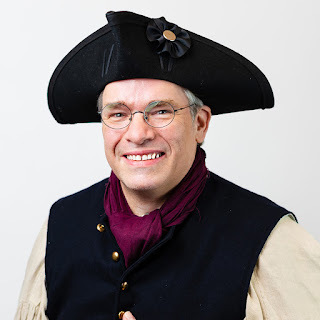
JMR-What’syour favorite historical time period? Why?
LH- As I’ve nowwritten seventeen novels set during the era of the American Revolution, it’sdifficult for me to claim a different historical time period, but the era ofthe early space race, culminating in Armstrong’s first step onto the Moon wouldhave to be a close second.
JMR-Whois your favorite historical figure? Why? If you could ask them one question,what would it be?
LH- I find thetragic early death of Joseph Warren at Bunker Hill both heartbreaking andincredibly compelling. He was both anearly ideological leader of the independence movement and a fearless militaryman. I am convinced that had he lived,we would refer to him in the same breath as figures such as Washington andJefferson, and would marvel at the very thought of the Revolution succeedingwithout him.
As for whatquestion I’d want to ask him, I think that the key one is why he was soreckless with his life in the Battle of Bunker Hill. He was far more valuable to the cause of theRevolution as a living participant than he is as a nearly-forgotten martyr.
JMR-How did you come to be a writer of historical fiction?
LH- I’ve alwayslearned best from historical fiction, and when a friend kept telling me abouthow important the Carolinas were in the Revolution, I asked him to recommendsome good historical fiction of the Revolution set there.
The only book hewas able to find was, frankly, not particularly readable, and when I finallyput it aside, I uttered those famous last words – “I think I can do bettermyself.” I sat down and wrote The Declaration, which has beenwell-received by readers ever since.
Over 3,500 pagesand seventeen novels later, I’m pretty sure that I have achieved the goal ofimproving upon what I had read at my friend’s recommendation.
JMR-We are all affected by the highs and lows in our lives. How has your lived lifeinformed your writing?
LH- What a great,challenging question! My early booksvery often featured characters who were struggling with an absent parent –whether away at war or dead – and I realized a few years ago that this waslikely not just due to the sad frequency with which such things happened in theRevolutionary era, but also because I was writing them in the wake of my ownfather’s passing.
Anotherconsistent theme in my books is that I write women who are spirited, andperhaps a tiny bit anachronistically independent-minded. It is no coincidence that I grew up in ahousehold with three strong-willed sisters, my grandmother, aunt, andexceptionally independent-minded mother. I can only write what I know when it comes to the characters ofwomen. I think that my favorite of thesecharacters is probably Louise from TheDarkness, whom we meet as she is breaking the jaw of a handsy British soldier.
JMR-Did you visit anyone of the places in your book? Where did you feel closest toyour characters?
LH- I grew up inthe setting of my novel The Prize,which is set on the shores of Vermont’s Lake Champlain. Hearing the legends of that conflict’s reachinto that remote corner of the American Colonies deeply informed that book.
However, a laternovel, The Convention, coincidentallyhas a scene that takes place on the opposite shore of Lake Champlain, at FortTiconderoga, as the British (through a superhuman effort) managed to placecannon on a hill overlooking that then-American stronghold. Standing on the site where that cannonemplacement was located, looking down past the stout walls of thatfortification, I could vividly picture the exultation of the British troops asthey watched the Americans hastily abandon that outpost.
JMR-Lars, tell us about your series, TalesFrom a Revolution.
JG- As Imentioned, I got started by wanting to explore the Revolution as it unfolded inthe South, and from the very beginning, I had a vision of writing a differentnovel for each of the colonies, as well as some of the future states.
I have just oneof the original thirteen colonies that declared independence left to write –Delaware – and I’ve been able to bring fresh attention to the contributions ofthe Spanish, Haudenosaunee (Iroquois), Haitians, French, and even British andLoyalists to the overall story of our national origins.
My books havebeen lauded both for careful attention to historical accuracy and for theircompelling storytelling, and I’m very grateful to the many readers who’vereached out to tell me what one or another of the volumes in the series havemeant to them.
With the 250thanniversary of the Declaration of Independence swiftly approaching in 2026, Iam very excited to be ready with a whole shelf of books for readers to diveinto as their interest in the Revolutionary era is piqued by the associatedcelebrations.
JMR-Whatprojects do you have in the pipeline?
LH- After I getmy Maryland book (The Word, focusingon the role of evangelical Methodism in the early abolitionist movement) outlater this year, I’ll be turning to Delaware, which will round out the originalthirteen colonies in my collection.
With that done, Ianticipate casting a somewhat wider web to continue the series, continuingfurther down the path of writing about places with unexpected connections tothe Revolution. My most recent release, The Powder, was a great example of thissort of title in my series, set in Bermuda and focused on the 1775 BermudaPowder Raid.
However, at somepoint, I will run out of locales that demand to have stories of theRevolutionary era written, and when I get there, I plan to turn to a new seriesexploring the early Republic era of American history, from about 1815 to 1850. It was a time when our nation was busilyinventing itself at every turn, and it’s one that has gotten woefully littleattention in historical fiction.
JMR-Tell our readers how to find you on social media and the web.
LH- I am mostactive on Facebook (https://www.facebook.com/Lars.D.H.Hedbor), with dailypostings of events in the Revolution of the date, as well as announcements,interesting articles, and the like. Youcan find my own Web site at https://larsdhhedbor.com, where you can sign up fora free e-book to try out the series, as well as find book club and educatorresources, buy signed copies, and see how the whole series relates, both ingeography and time.
JMR-What question were you hoping I’d ask but didn’t?
LH- I lovesharing the most rewarding moments so far of my career as a novelist of theRevolution. At the top of the list isseeing my book The Siege adapted as astage play, and then further adapted for a virtual performance during thepandemic.
Watching skilledactors breathe life into characters that had originated in my imagination wasboth awe-inspiring and humbling. Theyfound so much more in my characters than I had put on the page, and it’s amemory that I’ll treasure all my life.
Close behindthat, though, was the experience of speaking via a Zoom call with a gymnasiumfull of several hundred schoolchildren. They asked the best questionsof me, and seemed to really enjoy learning a little bit more about theRevolution than what they might have heard in their classes.
JMR- Thank you,Lars, for stopping by. Your books look really great! Readers, I’ve included alink to Lars’s book below. Please be sure to check it out.

January 26, 2024
Interview with author M B Zucker

Welcome Readers toanother installment of our author interview series. Today we have the pleasureof chatting with Michael, author of two historical fiction books.
JMR-Welcome to theBooks Delight, Michael. Tell our readers where you live, what you do for funand what does the perfect day look like?
MZ- Thank you forhaving me. I live with my family in Northern Virginia. My favorite hobbies arereading, watching movies, walking the dog (Maggie), and going out to dinnerwith my wife. My perfect day would be to spend several hours writing, then gofor a long walk with Maggie, have dinner and watch a show or movie with my wife,and then read before bed.

JMR-What’s yourfavorite historical time period? Why?
MZ- My favorite periodis the 1940s and 1950s. I view World War II and the early nuclear era as themost dangerous period in world history and so this period is more dramatic thanmost. WWII was my entry point into history when I was 15 and so it has a specialresonance for me.
JMR-Who is yourfavorite historical figure? Why? If you could ask them one question, what wouldit be?
MZ- Dwight Eisenhoweris my favorite since I think he was the most important person to navigating thedangers of the 1940s and 1950s. I would ask him his opinion on militaryinterventions for humanitarian purposes. He had deeper foreign policy judgmentthat almost anyone and I think his thoughts on that issue could beenlightening, particularly since he both spent his presidency avoiding war butalso witnessed the Nazi camps in 1945.
JMR- How did you cometo be a writer of historical fiction?
MZ- My interest inhistory grew out of my interest in stories. WWII mapped onto adventures likeSpider-Man and Star Wars when I was 15 as good battled evil. Those interests,storytelling and history, then merged and birthed my interest in historicalfiction. Saving Private Ryan was the first film that showed me what thegenre can do.
JMR- We are allaffected by the highs and lows in our lives. How has your lived life informedyour writing?
MZ- The stresses ofwriting precipitated a period of depression when I was in high school. Sincethen, I’ve kept an eye on how my emotions fluctuate and how my subconsciousinstincts influence my thoughts. I have tried to portray this relationshipwithin each of my novels and often design protagonists’ arcs around it.
JMR- Did you visitanyone of the places in your book? Where did you feel closest to yourcharacters?
MZ- Since I live inNorthern Virginia and give tours at the Eisenhower Memorial on the NationalMall, I’ve spent plenty of time in the DC area, which is the main setting forthe novel. I’ve travelled down several of the streets Adams does and I’dvisited Boston and the Adams family’s Braintree estate when I was a teenager.
JMR- Michael, tell us aboutyour book, TheMiddle Generation: A Novel of John Quincy Adams and the Monroe Doctrine.
MZ- It’s a novel aboutJohn Quincy Adams when he was Secretary of State. Historians rank him as ourbest Secretary of State but even history buffs seem to know little about thechallenges he confronted in that office. His main challenge was opposingEurope, which sought to prevent South America’s independence from the SpanishEmpire. Adams waged a diplomatic chess match against Prince Metternich, theAustrian diplomat who masterminded Napoleon’s defeat and the Congress ofVienna. Subplots include the Missouri Crisis which triggered the rise ofslavery as a major national issue, the controversial 1824 election againstAndrew Jackson, and the pressure of being John and Abigail Adams’ eldest son.
JMR-What projects doyou have in the pipeline?
MZ- I’ve just startedresearching what will likely be a pair of novels about Karl Haushofer, a Germanacademic who shaped a lot of Nazi foreign policy and is considered Hitler’smentor. I’ve always wanted to write about a villain protagonist and I think Haushoferwill interest readers because he’s an important but little known player in theThird Reich and WWII.
JMR- Tell our readershow to find you on social media and the web.
MZ- I have an authorwebsite at www.mbzucker.comthat has links to my books, a blog, interviews I’ve done, and The EisenhowerEncyclopedia, which has everything I know about Ike.
My Twitter (X) accountis @MichaelZucker1. I tweet about history and historical fiction almost everyday.
JMR- What question wereyou hoping I’d ask but didn’t?
MZ- I’d like to mentionthat The Middle Generation has won three awards so far and all thereviews have commended the book’s character depth and dialogue, so readers whoenjoy historical/political fiction with those elements will find a lot to likein my novel.
JMR- Thank you, Michael,for stopping by. Your books look really great! Readers, I’ve included a link toMichael’s book below. Please be sure to check it out.


January 25, 2024
Interview with Author Scott McCrea

Welcome Readers toanother installment of our author interview series. Today we have the pleasureof chatting with Scott McCrea, author of The Tales of Tom Mix Series.
JMR-Welcome to theBooks Delight, Scott. Tell our readers where you live, what you do for fun andwhat does the perfect day look like?
SM- Hello and thank youso much for this! It’s a pleasure to speak with your readers. Right now, I livein Huntington Beach, CA, but prior to that I was a lifelong resident of NewYork. Here’s a dirty little secret – I hated New York! Lived there almost mywhole life and could not wait to get out of it. Too congested, too dirty, toosmelly. No wonder I write Westerns! I spent years and years in New York,dreaming of wide-open spaces!
I do all kinds ofthings for fun, but I love reading. I guess all writers do. I read everything:westerns, detective fiction, thrillers, history, biography, poetry. I’mbeginning to think it’s ink and not blood that flows through my veins.
There are many ways Icould have a perfect day. I love to go camping and spending the day in thewoods sounds ideal. But I love museums, so spending a day in an art museumwould be heaven. I also love movies, so a day in front of TCM with a stiffdrink would be great fun.

JMR-What’s yourfavorite historical time period? Why?
SM- Easy: the 19thcentury! You have the West happening here in the States, the Victorian era inthe UK, and perhaps the most vital intellectual and artistic moment of moderntimes happening on the Continent. On top of that, what a time for adventure!You could lose yourself in the American West, or exploring a world that wasstill largely unknown. Great books – now classics – were being written. Signof Four. She. Huckleberry Finn. The Picture of Dorain Gray.What a time to be alive!
JMR-Who is yourfavorite historical figure? Why? If you could ask them one question, what wouldit be?
SM- I have more‘favorite’ historical figures than I could count! I’d love to meet Conan Doyleor Oscar Wilde or Somerset Maugham or Gen. Gordon or Sir Richard Burton orLawrence of Arabia or Wyatt Earp or Bram Stoker. But if I had to pick justone, I’d go with Buffalo Bill Cody. He was a real-life western figure, andas the frontier closed, he started Buffalo Bill’s Wild West, a travelingtheatrical show that created many of the tropes we still think of when we thinkof Westerns. He was an expert tracker, a scout, a Pony Express rider, abusinessman, a showman and writer. The whole genre – our whole myth of theAmerican West – has its roots with Buffalo Bill. He was also a kind, graciousand open-hearted man. I’d have loved to have been his friend! He makes anappearance in my recent book, Tom Mix and the Wild West Christmas. If Ihad a chance, I wouldn’t ask him anything specific – I’d just let him talk!
JMR- How did you cometo be a writer of historical fiction?
SM- When I was in highschool, a teacher of mine said I was a displaced person in time. I’venever forgotten that. He was so right. I don’t believe in reincarnation or pastlives, but the past has always seemed more real and vital to me than thepresent. Certainly I understand it better!
JMR- Did you visitanyone of the places in your book? Where did you feel closest to yourcharacters?
SM- I write two seriesright now, the Tales of Tom Mix and the Bradigan’s Mountainbooks. The Tom Mix books are westerns that take place in the final days of theWest in Oklahoma and I make a point of making all of them different. CowboyVengeance, for example, is a grim revenge story, while Hogg Wild isa riotous comedy. The Bradigan’s Mountain books are a family saga thattakes place in the mountains of Oklahoma.
The Oklahoma I writeabout no longer exists, though I have spent a lot of time riding, camping and learningthe ways of the West and mountain men.
But the amazing thingis – I’ve never set foot in Oklahoma! Tom Mix and Bradigan’s Mountain takeplace in the landscape of my imagination! I spend a lot of time there.
JMR- You writeWesterns; is there anything unique about this genre that sets it apart fromothers?
SM-Yes, I’m glad youasked that. I think, of all the genres, that there is something more honest aboutwesterns. A good western is a morality play with the stakes pared down to bareessentials. A western connects you to a universal humanity in ways that, say,science fiction could never hope to do.
JMR- Scott, tell usabout your new book, A Mountain Man’sRevenge.
SM- My most recent bookwas Tom Mix and the Wild West Christmas, which may be the happiest bookI’ve ever written. I had real Christmas spirit. But now that the season is over(sob!), time to get back to gritty action. Mountain Man’s Revenge willbe the final book in the current Finding Bradigan’s Mountain trilogy. I’mworking on the last few pages now, so keep a watch out for it in late January,early February 2024. Expect lots of action, a depiction of the trials of lifein the mountains, and a touch of romance.
JMR-You are a prolificwriter! What projects do you have in the pipeline?
SM- I was unusuallyprolific in 2023! I wrote 12 westerns and then, under different names, athriller, a comedy and a YA novel! I hope to do another 12 westerns this year.
However, you and yourreaders will be the first to know that I’m publishing several thrillers in2024. The first is a book called The Perfect Gift, about a womancriminal who balks when she gets involved in child trafficking. The other twoare about an American rancher named Lucas Wheeler who gets involved, againsthis will, with international intrigue.
JMR- Tell our readershow to find you on social media and the web.
SM- My Web site is www.talesoftommix.com,and you can find me on Twitter @ScottMcCreaWest and under the same handle onInstagram. Feel free to follow and ask questions – I love to connect withreaders.
SM-Thanks for not asking where do you get your ideas! I get askedthat about once a week and the honest answer is, damned if I know.
Connect with me on Twitter and letme know; I write to be read, and it’s great fun to connect with other bookpeople!
JMR- Thank you, Scott,for stopping by. Your books look really great! Readers, I’ve included a link toScotts’s books below. Please be sure to check them out.

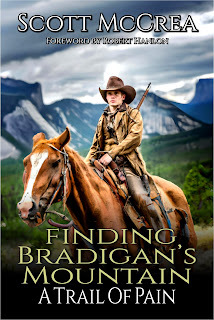
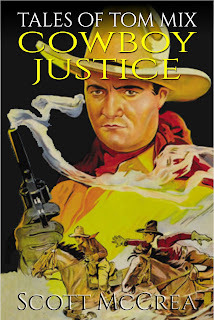
January 24, 2024
Author Interview: Stephen Black

Welcome readers, to another addition to our author interviews. Today we are excited to chat with Stephen Black, a dark fantasy and horror writer from Northern Ireland. He is the author of the critically acclaimed, best-selling ‘Kirkwood Scott Chronicles’ series. He has also had short stories published by Quill & Crow Publishing House in their ‘Grimm & Dread’ and ‘Haunted’ anthologies, in addition to ‘The Crow’s Quill’ online literary magazine. Stephen is married with three children. In his spare time…hang on, Stephen doesn’t have any spare time.
JMR-Welcometo the Books Delight, Stephen. Tell our readers where you live, what you do forfun and what does the perfect day look like?
SB- Thank you. I’m fromBelfast, Northern Ireland. I’m very busy with my 9-5 job, in addition to mywriting and editing work, so don’t have a lot of free time. I’m a bit of a homebird, so don’t like to stray too far from there. My wife and three childrenalso keep me occupied with a hectic family life. I used to run quite a lot, sowould hope to get back into that.
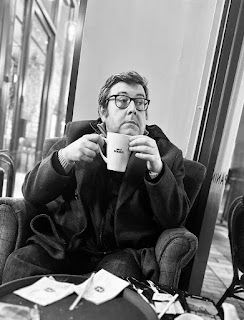
JMR-What’syour favorite historical time period? Why?
SB- It would be thenineteenth century. I studied the Napoleonic Wars at university, and my firstbook, Skelly’s Square, is centered around the Battle of Waterloo. I’m alsointerested in all things Victorian. Such a fascinating era to study.
JMR-Whois your favorite historical figure? Why? If you could ask them one question,what would it be?
SB- I don’t really haveone. I’m much more interested in the ordinary people rather than famousfigures. For example, the infantry soldier at Waterloo and their experienceswould interest me more than anything Wellington or Bonaparte could say. Theexperience of standing in square formation as, all around, hell descends in theform of French cannon and cavalry. What was that like? That’s real history forme.
JMR-How did you come to be a writer of historical fantasy? What does writinghistorical fantasy allow you to do as a writer that you can’t do with straighthistorical fiction? How do you define historical fantasy?
SB- I’ve always beeninterested in history, particularly military history, and I studied ModernHistory at University. I grew up on the works of Tolkien, and C.S. Lewis isfrom Belfast, so historical fantasy was always the most logical path for mewhen it came to creative writing. The fantasy aspect allows for a little moreartistic freedom while anchored within an accurate historical backdrop. I hopethat I achieved that with The Famine Witch.
JMR- Stephen, tell us about yournew book, The Famine Witch.
The Famine Witch’ is a darkhistorical fantasy set in Belfast. The year is 1847 and the island of Irelandis being ravaged by the famine, and accompanying disease, of ‘The GreatHunger.’ The cemeteries and hospitals are overflowing with the dead and dying,and societal norms are breaking down as crime and disorder soar. To add tothis, a crazed killer stalks the streets at night, butchering young women. Thelocals refer to him as Bloody Hands. Amidst the chaos, nineteen-year-old MaggieMalone and her brother, Jinks, fight for survival before being dragged into acenturies-old feud between Bloody Hands and a malevolent force that haunts themountain overlooking Belfast. The Cailleach, The Winter Queen. The BlackLady...
JMR-What projects do you have in the pipeline?
SB- I have severalideas, all set in Northern Ireland during the 1969-1998 Troubles, that areloosely connected. It’s a dark fantasy series with horror elements that leansheavily on the old gods of pre-Christian Ireland.
JMR-Tell our readers how to find you on social media and the web.
SB- Twitter -@stephenRB4
Instagram, Threads,& Facebook - @stephenblackauthor
JMR-What question were you hoping I’d ask but didn’t?
SB- How many Guinnessdo you drink in an average day 😊
JMR- Thank you, Stephen, for dropping by and sharing your book. And how many pints do you drink a day?
Readers, I have included a link below for you to check it out.

January 23, 2024
Interview with author Jeanne Gassman

Welcome Readers toanother installment of our author interview series. Today we have the pleasureof chatting with Jeanne, author of two historical fiction books.
JMR-Welcome to theBooks Delight, Jeanne. Tell our readers where you live, what you do for fun andwhat does the perfect day look like?
JG- I live in Ruidoso,New Mexico, a small town on the edge of the Lincoln National Forest. I enjoyreading, hiking the local trails that wind through our natural beauty, walkingour dog, and playing and singing music. I sing in our church choir, which has beena learning experience, since I’m an instrumentalist, not a trained vocalist.
My perfect day beginswith a walk with my husband and our dog, Picasso. After we return home, I goupstairs to my home office and dig in on my latest writing project. In theafternoon, I putter around the house, practice music, or even take a nap! Inthe evenings, I dig into a book on my TBR list.
JMR-What’s yourfavorite historical time period? Why?
JG-I don’t know if Ihave a favorite historical era. I’m a history buff, so I love learning aboutall time periods. I’m fascinated by the continuum, how historical events affectevents in the present. What happened years ago has an impact on our culture, ourlifestyles, our beliefs, and our laws. We think we are moving forward, but aswe move forward, we are always responding to what happened in the past.
JMR-Who is yourfavorite historical figure? Why? If you could ask them one question, what wouldit be?
JG-Probably one of myfavorite historical figures is Abraham Lincoln. He served as President duringone of the most difficult times in our history, and he had rough personal lifeas well. His son died, and he suffered from depression. I would ask him wherehe found his strength.
JMR- How did you cometo be a writer of historical fiction?
JG-I think I sort offell into it with my interest in history. When I started writing fiction, Ifound myself fascinated by the lives of people in the past. I wanted tounderstand their cultural choices, their responses to change in their worlds,and their struggle to find meaning in their lives.
JMR- We are allaffected by the highs and lows in our lives. How has your lived life informedyour writing?
JG-My husband and Ihave shared multiple, deep losses. We’ve had two children die. My mother hadAlzheimer’s disease. I lived through two life-threatening pregnancies, and mostrecently, my husband has lost most of his sight. These losses have given me adeep well of empathy.
We’ve also had somewonderful experiences. We adopted two biracial children who have grown intoterrific adults. We’ve traveled to Paris and Italy and all over the country. Wewere able to move to our dream home six years ago. My first novel won severalprestigious awards. I’ve been blessed in so many ways, and those blessings havetaught me resilience.
Nothing in your life isall good or all bad. That view is reflected in my writing. My characters oftenendure loss and tragedy, but they find the strength to rise up, to reinventthemselves, and to find hope in the future.
JMR- Did you visitanyone of the places in your book? Where did you feel closest to yourcharacters?
JG-My first book is setin first century Palestine. I was unable to visit that location in person, butI did have access to experts and resources that informed my writing. When I wasworking on Blood of a Stone, I visited a Biblical arboretum in Texasthat had recreated a setting in Galilee. I felt very close to my charactersthere.
JMR- Jeanne, tell usabout your book, Blood of a Stone.
JG-Set in the firstcentury on the edges of the Roman Empire and the Jesus movement, Blood of aStone is a sweeping story of murder, betrayal, love, and the search forredemption.
Faced with thebrutality of slavery, Demetrios confronts his master and flees by the blood ofa stone. Determined to escape his past, he struggles to create a new life and anew identity with his friend and fellow escaped slave Elazar.
However, freedom hasits price. Secrets cannot remain secret forever. A chance for love is lost.Elazar betrays Demetrios to a so-called prophet named Jesus of Nazareth.Fearing the Roman authorities and Jesus, Demetrios risks everything to silencethose who would enslave him again. His quest leads him to startling discoveriesand dire choices. Demetrios must answer the question we all ask: Can we be freeof our past?
One of the themes Iexplored in this novel is the element of forgiveness. Can we forgive those whohave harmed us? Can we forgive ourselves for our bad choices and decisions?When we first moved to Ruidoso, I was thrilled when the priest of our church usedan excerpt from my novel for her sermon, which was about the meaning offorgiveness.
JMR-What projects doyou have in the pipeline?
JG-My second novel, Whenthe Sky Fell, is currently on submission with my agent. Set against thebackdrop of the Cold War, it’s a story about a family of downwinders, peoplewho contracted cancer from government-sanctioned radioactive fallout from theatomic bomb tests in Nevada. The novel spans 30 years, from the early atomicbomb tests in the 1950s to the downwinders’ struggle to find justice andcompensation from the federal government in the 1980s.
I’m working on a thirdnovel about an artist in Santa Fe, New Mexico, who paints visions of futureclimate change disasters. Although he can paint these horrific scenes, he hasno idea when and where they would take place. His wife, a gallery owner, promoteshis career, but the two of them get caught up in an attack by a conspiracytheorist who is obsessed with finding solutions for climate change and believesthe artist knows more than he’s telling. The novel explores the intersection ofart, science, and climate change. Obviously, this book is not historicalfiction.
I’m also working on anessay collection about my life experiences.
JMR- Tell our readershow to find you on social media and the web.
JG-You can find me allover the Internet.
Website:jeannelyetgassman.com
Twitter: @JLyetGassman
Threads and Instagram:jeanne.gassman
Facebook: https://www.facebook.com/JeanneLyetGassman
My blog, Jeanne’sWriting Desk, where I post opportunities for writers:jeannelyetgassman.blogspot.com
JMR- What question wereyou hoping I’d ask but didn’t?
JG-How do you researchyour historical fiction?
JMR- Thank you, Jeanne,for stopping by. Your books look really great! Readers, I’ve included a link toJeanne’s book below. Please be sure to check it out.

January 22, 2024
Author Interview with Chrissie Parker

Welcome Readers toanother installment of our author interview series. Today we have the pleasureof chatting with Chrissie Parker, author of multiple historical novels.
JMR-Welcome to theBooks Delight, Chrissie. Tell our readers where you live, what you do for funand what does the perfect day look like?
CP- Thanks for hostingme! I live in Devon in the UK. I love walking, photography and exploringcastles, historic homes, and ancient sites. I also enjoy lots of creativethings like crafting, knitting and painting.
For me, the perfect day is getting out and about to explore somewhere new.
JMR-What’s yourfavorite historical time period? Why?
CP- My favourite isAncient Egypt. It’s fascinated me since I was a child. The Egyptians were incrediblyinteresting people in all aspects of their lives. The temples and otherbuildings they created were incredible and what they did to ensure a goodafterlife is utterly fascinating.
I will also admit that Nabataeanhistory comes a very close second though. They were equally as fascinating, andthe ancient site of Petra is stunning!
JMR-Who is yourfavorite historical figure? Why? If you could ask them one question, what wouldit be?
CP- This is a difficultone as there are so many interesting ones. If I must choose just one, I’d probably go back to Ancient Egypt at thetime it was ruled by the female Pharoah Hatchepsut. I’d ask her what life as afemale king was like and if she really was accepted by her subjects, as modern evidenceshows she may not have been.
JMR- How did you cometo be a writer of historical fiction?
CP- I have always lovedhistory and archaeology. When I was at school, I wanted to be an archaeologist,but my grades weren’t good enough. I used to do a lot of writing as a child andspent my adult years writing many books but none of them gelled with me. In2000 my husband and I visited the ancient site of Petra in Jordan, and I fellin love with it. Upon return I wrote my first published book, set in Petra, weavingtogether my love of archaeology, history, and writing!
JMR- Did you visitanyone of the places in your books? Where did you feel closest to yourcharacters?
CP- Yes, all myhistorical fiction books are set in places I’ve visited, such as Petra, Egypt,and Greece. I love being able to immerse myself in the locations, sights,sounds and weave them through the stories I create. I think I feel closest tomy characters in the locations where something important happened in theirlives.
JMR- Chrissie, tell usabout your new book, Among the Olive Groves.
CP- The book I’dlike to highlight is Among the Olive Groves, Book 1 of the Zakynthian FamilySeries. It was published nine years ago, but it’s one of my readerfavourites. It’s set in a dual timeline, one of which is Zakynthos during WW2.The story is about a female resistance fighter called Elena and what happens toher during the war. The story is fictional, but there are lots of facts aboutZakynthos during the war woven in, which makes it more interesting for thereaders. I’m highlighting it as I’m currently editing the follow-up book whichshould be out later this year. I’m also very proud of everything the book hasachieved over the years, including the fact that it’sused as text for TIE International ESOL exams in Greece!
JMR- You co-authored a history book about theGreek island of Zakynthos. What was it like to work with a second author? Howdid you split the writing duties?
CP- Yes, we are in year nine of working on the book and arenow at the editing stage. For me it was easy to work with another author. My co-authorLouise and I had already worked together on a tourism website and we workedwell together. I live in the UK, but Louise lives in Greece, so we’ve writtenthe whole book via shared docs, messages, and video calls! It’s worked wellthough. We came up with the list of topics and then split them between us tomatch our strengths. So, Louise concentrated on things like tradition, culture,festivals etc., and I did the subjects of archaeology, geology etc. We’ve alsomet in the middle and divided up the other subjects, working on some together. It’sbeen a fun project to work on and we can’t wait to release the book.
JMR-What projects doyou have in the pipeline?
CP- As well as theHistory book about Zakynthos, I’m currently editing A Night of Thunder, Book2 of the Zakynthian Family series, which is a follow up to Among theOlive Groves. There was never meant to be a follow up book, but I receivedhundreds of messages from readers wanting to know what happened to a specificcharacter, so I’ve now written a follow up. It’s turned out to be quite a longstory, so there will also be a third and final book called Hope Under BlueSkies, Book 3 of the Zakynthian Family series.
I’ve also just finishedwriting another book which is currently under wraps and due to be announcedsoon, unfortunately I can’t share any more about it at the moment, but it’s oneI have loved working on and again features a real event.
After these books I’mgoing to be rereleasing my first published book as it’s now out of print andI’m going to be writing another historical adventure series, but it’s still inthe planning stage, so I don’t have all the details yet
JMR- Tell our readershow to find you on social media and the web.
CP- Of course, I have awebsite, where there’s lots more information, short Q&As as well aslocation photos: https://www.chrissieparker.com
I can be found on thefollowing social media:
Facebook: https://www.facebook.com/ChrissieParkerAuthor
Threads: https://www.threads.net/@chrissieparkerauthor
Instagram: https://www.instagram.com/chrissieparkerauthor/
Soundcloud: https://soundcloud.com/chrissieparkerauthor
JMR- What question wereyou hoping I’d ask but didn’t?
CP- One question I getasked a lot is: Is writing historical fiction hard and do you have to do alot of research?
My answer would be,it’s not particularly hard, but the research side is important. Readers areentering a world that was very different to the modern age and so getting thehistory, locations, clothing, even tone of speech right, is vital. There’snothing worse than writing something and it being wrong! But I’d also say don’tpanic over it, enjoy the research, it can be great fun and it’s one of the thingsI enjoy about the writing process.
JMR- Thank you, Chrissie,for stopping by. Your books look really great! Readers, I’ve included a link toChrissie’s books below. Please be sure to check them out.
CP – Thanks so much forhosting me today!

January 21, 2024
Interview with author Ben Westerham

Welcome Readers toanother installment of our author interview series. Today we have the pleasureof chatting with Ben, author of two mystery series.
JMR-Welcome to theBooks Delight, Ben. Tell our readers where you live, what you do for fun andwhat does the perfect day look like?
BH- I live in a villageof about 1,500 people in the English Midlands about 100 miles north of London.My wife and I moved here 26 years ago and have raised our two boys in thevillage. It’s a lovely part of the country, where we have some wonderful friends,access to lots of beautiful countryside and just enough partying opportunitiesto stop us from falling into an endless slumber.
Since last Autumn I’vebeen a full-time author, so I now have almost complete control over my days andI’ve wasted no time making the most of this. A typical day, Monday to Friday,sees me take a short walk first thing, breakfast then get down to writing forup to three hours. I would prefer to write in the evenings, being a night owl,but that doesn’t fit with family life. After lunch I get on with the marketingand business side of being an author. I love the balance this approach brings,exercising both the left and right sides of the brain.
Because I love what Ido so much it took a lot of effort, at first, to stop myself from working intothe evenings and at weekends, but I now routinely keep those times free for thefamily and the silly number of hobbies and interests that I have, includinggardening and family history research.
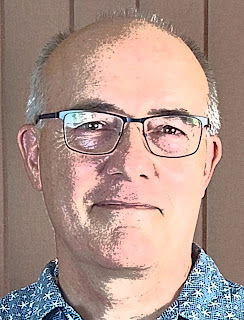
JMR-What’s yourfavorite historical time period? Why?
BH- That’s a tough one,not least of all because I’m a history graduate and I love all periods andplaces in history. I suppose, at a push, I’d opt for the nineteenth-century. Ilike periods of great change and this was certainly that. Sticking to just lifehere in the UK, there was major change across all aspects of life, economic,political, social and cultural. I read hordes of history books and yet stilloften find myself surprised at how little I, in fact, know about the nature ofthese changes, be it their drivers, their impacts or even the part they playedin developing the life we lead today.
JMR-Who is yourfavorite historical figure? Why? If you could ask them one question, what wouldit be?
BH- I’m going to cheathere because I really don’t have a single favourite figure from history. I canremember early last year being asked which three characters from history Iwould invite to dinner and why. My answer was Oscar Wilde, Benjamin Disraeli andWinston Churchill. I doubt conversation and opinions would be hard to come byand it would have the added benefit that all three were writers, as well asother things.
As for a question, Iwould like to ask each of them what makes them happy.
(By the way, do any ofyour readers know what the connection is between Oscar Wilde and BenjaminDisraeli)?
JMR- How did you cometo be a writer of historical fiction?
BH- Tech. This mightsound ironic, given that I worked in the I.T. industry for over three decades,but, as an author, I hate feeling hemmed in by the presence of technology inmodern life. Whenever I do write stories set in the here and now (which are, todate, always short stories) I feel the constant need to have the charactersreaching for their phones or looking something up on the internet or dodgingCCTV cameras. It’s a blessed nuisance. Don’t get me wrong, I love tech. I’minto blockchains, NFTs and A.I. and I read sci-fi and articles on space travel,but keep it away from my writing, if you please.
I realised this as soonas I set out to write the first book in my David Good private investigatorseries. I wanted the focus to be on the people and keeping tech out of thepicture helped with this. I opted, in this case, for the 1980s and Londonbecause it is a period and place I know from experience.
I loved writing thosebooks and the experience gave me the confidence to then move on to a period alittle before my time, setting my Banbury Cross mystery series in the early1960s. Again, it’s the relative simplicity of life and absence of modern-day techthat has helped me to keep the focus on the people. I chose to set these booksin the small market town of Banbury in Oxfordshire, which is about nine milesfrom where we live, and it has been great fun, as well as very informative,researching life in and around the town back then.
JMR- We are allaffected by the highs and lows in our lives. How has your lived life informedyour writing?
JG- I like to think Ihave enough life experience under the belt now to have shaken off the arrogancethat is a part of being young and to have developed a far wider tolerance ofpeople and things, beliefs and actions that are not in tune with my own. Thisgives me a much wider outlook.
In truth, my writing isin part an escape. I tend, with my novels at least, to steer away from a greatdeal of darkness. There are exceptions, certainly in my David Good books, andsaying I largely avoid the darker parts of life when I write stories in whichpeople are invariably bumped off might seem a bit confusing, but I limit whatyou see.
My sense of humour alsotends to show through in my writing. That’s sometimes just the way I am but itcan also be a good counter-point to something darker.
Certainly, my writingwould not be what it is without the experiences, good and bad, that I haveencountered as part of life’s journey.
JMR- Did you visitanyone of the places in your book? Where did you feel closest to yourcharacters?
BH- The settings for mystories are a mixture of real-life and creations from my imagination. Thecities and towns are real, but villages and individual properties are sometimesreal and sometimes made-up.
The character I feelclosest to is David Good. Partly that’s because I wrote those stories in thefirst person but also because he inhabits a time and place in London which Iexperienced myself. Let’s just say there are one or two pubs and parties I frequentedthat acted as models for equivalents in these books.
JMR- Ben, tell us aboutyour book, The Meyer Hoffman Affair.
BH- Two of my all-timefavourite books are The Thirty-Nine Steps by John Buchan and The Riddle of theSands by Erskine Childers. The latter would make my ‘three books for a desertisland’ list.
I long harboured adesire to write a story in the style of these two early-nineteenth-centuryespionage books but held off because I simply couldn’t see there being anyoneinterested in reading them. But eventually I decided to indulge myself andwrite The House of Spies purely for my own pleasure, without any expectation ofpeople paying money to read it.
I absolutely lovedwriting that book, which sees my hero, trainee solicitor Alexander Templeman,take on a dastardly agent of an overseas power. I went all in, doing my best toreproduce not only the sort of story and setting you get in a Buchan but alsothe language. It was a sheer joy to write. Then I put it up for sale and wastaken aback to see people start buying it.
Well, I was hardlylikely to pass up an excuse to write another one, so that’s precisely what Idid. In The Meyer-Hoffman Affair, Templeman has now been signed up by therecently launched British Secret Service and is sent off, with a moreexperienced agent, to escort to London a German scientist with crucial skillsin the development of new weapons. Needless to say, all does not go accordingto plan, after all, the Germans are hardly going to give the man up without afight.
Hopefully, I have againcaptured the flavour of these old-style espionage stories. I also indulgedmyself further by setting the second-half of the story in the tiny, ancientport of Rye, which sits on the south coast of England overlooking the English Channeland still has its cobbled streets and red-brick buildings from centuries goneby. It’s an utterly beautiful place and one I know well. I only hope I’ve donethe town justice. The book is out at the end of January 2024.
JMR-What projects doyou have in the pipeline?
BH- The biggest problemwriter me has is that he comes up with way too many ideas for things he’d liketo do. I just love to create. Mostly that’s with words, but I’m starting toturn my mind towards some multi-media projects I’d like to give a go. Nothingis firmed up yet but I will definitely get at least one of these off the groundthis year.
I think theopportunities authors have with blockchains and NFTs are astonishing,especially for those who want to do multi-media work. Add A.I. into the mix andwe really are entering a period of utter joyous delight for creatives. I feelso incredibly lucky.
I’m trying to find timeto grow my audio output because readers are now asking for it more and moreoften and I always aim to please. It does seem to still be a growth area.
Aside from that, therewill be another book in my Banbury Cross mystery series this year, severalshort stories and, possibly, another Alexander Templeman book, just in time forChristmas shopping.
JMR- Tell our readershow to find you on social media and the web.
BH- They can find me onX @benwesterham, Facebook https://www.facebook.com/BenWesterham/and in Web3.0 land on Hive @benwesterham.
JMR- What question wereyou hoping I’d ask but didn’t?
BH- Easy, who is yourfavourite author? A terrible question to ask anyone! Anyway, my answer changesso frequently it is almost meaningless. At the moment I am reading Death inHallowed Places by PD James and, since it is very good indeed, today she is myfavourite author.
JMR- Thank you, Ben,for stopping by. Your books look really great! Readers, I’ve included a link toBen’s book below. Please be sure to check it out.

January 20, 2024
Interview with Author Maureen Morrissey

Welcome Readers toanother installment of our author interview series. Today we have the pleasureof chatting with Maureen Morrissey, author of two historical fiction books.
JMR-Welcome to theBooks Delight, Maureen. Tell our readers where you live, what you do for funand what does the perfect day look like?
MM-I live in a smalltown just north of New York City, where I was born. I get the best of allworlds here, because I can be in the middle of and mayhem in forty-five minutes and then wake up in my quietsolitude in the woods. I love both, so I’m very fortunate.
My husband and I justreturned from a three-week, six-thousand-mile road trip that covered fifteenU.S. states, and traveling is something we do as much as possible. The world istruly incredible and full of stories, and I want to experience them all! Theother thing I love to do is spend time with our kids and grandkids. I writearticles about things like babysitting and being the mother of adult children.
My perfect day is : I write for most of the morning, takinga break to run 5-7 miles every day that I can. I love to cook something gourmetfor dinner and then we become couch potatoes and binge on some series. Duringthe summer, I’ll do a treading-water workout in the pool and read novels.
JMR-What’s yourfavorite historical ? Why?
MM- The World War II has so many achingly heart wrenchingstories that we know of, and so many that we don’t. It directly affected myfamily, as I am the child of holocaust survivors and refugees. I love Herman Wouk’s books that show differentpoints of view of the period leading up to WWII and during the war itself. Thenovel I’m sharing here today features some fictionalized versions of my familyhistory during and after the war.
I taught history duringmy thirty-seven years as an educator, and I loved learning more about theAmerican Revolutionary war and the Native American history before Europeansarrived to this continent. It’s hard to choose a “favorite!”
JMR-Who is yourfavorite historical figure? Why? If you could ask them one question, what wouldit be?
MM- Hands down, I’dlove to be in the same room with Benjamin Franklin. He was a brilliant humanbeing who did not feel beholden to societal expectations. He was the originalmulti-tasker and self-actualized person who undiagnosed ADD. I’d ask him to tell me the most outrageous thing heever did that people did not know about. I think there would probably be a lot.
JMR- How did you cometo be a writer of historical fiction?
MM- I grew up hearingstories about my own family and the families of my many immigrant friends, notunusual for 1960’s-70’s in NYC. I became intrigued very early on with the waypeople survive and thrive through adversity. I loved reading historical fiction,which helped me learn facts and their effects on ordinary people in a personalway. When I was trying to figure out how to tell my family stories, I realizedI didn’t have enough information to write a memoir, so I began to research tofill in the gaps and wrote historical fiction to give myself creative licenseand make the stories interesting to others.
JMR- Did you visitanyone of the places in your book? Where did you feel closest to yourcharacters?
MM- Because I was afirst-generation American, I had close family in the Netherlands through myfather, and Colombia, South America through my mother. We traveled to and spenta lot of time in both, and I connected deeply to the language, culture, peopleand history of both. It helps that I speak Spanish and Dutch fluently!
JMR- Maureen, tell usabout your book, Woven.
MM- The day after Iretired from teaching, just as the pandemic started, I sat down to finallywrite the book that had been nagging me for ten years. I wrote and researchedfive to six hours each day and had a first draft in four months.
Woven: Six Stories, OneEpic Journey went through so many iterations, withthe support and suggestions of beta readers and patient family members. One ofmy biggest struggles was how to put all the different characters and theirstories into a cohesive novel. The idea to keep each character’s story as aunique novella that intertwined to form the whole story was the last missingpiece of the puzzle. I’d always thought history should be taught as the storyof what happened and how it affected the lives of people who lived through it,and that’s how I wanted to tell my story. The early part of the novel covers150 years and is more like a timeline of lives; the second and third parts slowdown and zoom in on a more current period of history.
I wanted to portray theintertwining of lives as well, so I wrote the novel in three parts: “His”,“Hers”, “Theirs”, to show how the characters came together.
JMR- Tell our readershow to find you on social media and the web.
MM- I am on ALL thesocial media!
Instagram/Threads: https://www.instagram.com/maureenmorrisseyauthor.com
TikTok: www.tiktok.com/@momoauthor
Facebook: www.facebook.com/mmorrisseyauthor
Medium: www.medium.com/@mobility61
My author website: www.maureenmorrissey.com
My Amazon Authorwebsite https://www.amazon.com/stores/author/B08NFCT89C/about
JMR- What question wereyou hoping I’d ask but didn’t?
MM- “What’s thecraziest thing you secretly wish you have done but never will?” I loveexperiencing thrills like roller coasters and jumping off 30-foot-highplatforms into lakes, and I have always thought skydiving would be amazing. Butthen two things happened: When I was a teenager, I saw a girl my age wrapped inbandages from head to toe like a mummy being pushed around in a wheelchair, andwhen we asked, her mother said it was a skydiving accident. I stillconsidered doing it, but then our son got a job at a skydiving company. He waseighteen years old, and his job was packing parachutes and when he told me whatwent on behind the scenes, that was it for me!
Let’s keep it betweenus, but I still might change my mind.
JMR- Thank you,Maureen, for stopping by. Your books look really great! Readers, I’ve includeda link to Maureen’s books below. Please be sure to check them out.

I will add a button andlink to the book.



